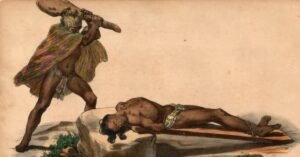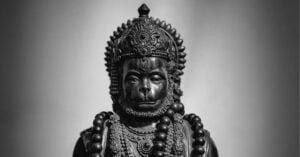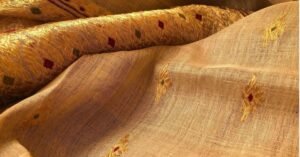The intricate artistry of Assam Silk woven by local artisans is an act of creative brilliance. Beyond its famed tea gardens, oil reserves, and unique wildlife like the one-horned rhino, Assam stands renowned worldwide for its silk heritage. As per the records of Indian history, the knowledge of sericulture spread from Assam to other parts of India. In this blog, we delve into the realm of Assam silk, and its history, exploring types of Assam silk, production methods, industry dynamics, pricing, designs, and more.
History of Assam Silk
With a history as ancient as the Assamese civilization itself, the origins of silk production in Assam trace back to the arrival of Tibeto-Burman groups from China around 3000-2000 BC. Assam falls on the alternative silk route that passed through Tibet-Assam-Burma-Malayasia.
Although silk was cultivated and woven by women all around Assam, the silk clothes of a particular place named Sualkuchi achieved much fame during rule of Pala dynasty as well as during Ahom rule.
Sualkuchi, the silk center of Assam, is said to have been established in the 11th Century by King Dharma Pala of the Pala dynasty that ruled western Assam from 900 AD to about 1100 AD. Dharma Pala, the story goes, brought 26 weaver families from Tantikuchi in Barpeta to Sualkuchi and created a weavers’ village close to modern-day Guwahati.
During the Ahom rule, silk became the royal fabric and was popularised and commercialised by various ahom kings. It was customary wear silk made cloth for all Ahom kings and nobles.
Types of Assam Silk
Sericulture in Assam comprises mulberry (pat) and non-mulberry silkworm culture. The latter includes endi, muga and oak-tassar. So, three varieties of silk, viz. muga, pat (mulberry) and endi (also called eri) are produced in Assam. These silks are categorized according to the kind of silkworms from which they are derived
Endi and muga silks are considered to be of indigenous origin and found only in Assam and the foot-hills of Meghalaya. Oak-tasar culture is a recent addition. The traditional textiles, woven out of these assam silks are known for the fine quality, brightness of colour and durability.
Muga Silk of Assam
Muga worm (Antheraea Assamensis) is basically a wild variety and it is endemic to Assam. It is the second most expensive silk in the world after Pashmina. A saree of 100% pure Muga silk of Assam starts from Rs. 40,000/.

Why Muga Silk is so famous?
Historically, Muga Silk has been the fabric of royalty. The golden color of the silk is a symbol of lavishness and luxury. the matte golden finish and shine. after wash the shine does not lost but increases. It is smooth to wear in all weather conditions.
The best thing about Muga Silk is it can last upto 1000 years (no rough use scenario) and last upto 500 years without any degradation after repeated wash and use. People are attached to it because it became a generational thing.
Further, it has the ability to cut harmful UV rays (proven scientifically).
Why cost of Muga Silk is so high?
To produce 500 grams of raw muga silk around 2500 silkworms are needed. On an average, a saree (6-8 square metre) needs a 1000 cocoons of muga silkworms. Now imagine, making silk out of 1000 silkworms just to make one saree.
It is expensive because of the unavailability of muga silk and its high demand. Further, huge amount of manual labour is needed to produce this silk. Some of its processes cannot be mechanized.
Production of Muga Silk
Muga Silk is made out of Muga Silkworm. The silkworm commonly fed on Som (Persea bombycina) tree in Upper Assam and Sualu (Litsea monopetela) in Lower Assam. In addition, Mejankari (Littsea cubeba), Pan chapa (Magnolia sphenocarpa), Dighloti (Listsea salicifolia) are secondary host plants (Figs.
Muga silk in general is a rich golden yellow or light brown in colour depending on the host plant on which the worms are fed and the season. Most of the cocoons are purchased ultimately by the traders of Sualkuchi (in Kamrup district of Lower Assam), where commercial reeling and weaving are done almost as a monopoly. The most important muga cocoon rearing villages lie in Lakhimpur, Dibrugarh, Sibsagar and Jorhat districts.
The item of dress made out of muga is Assamese women’s apparel (riha, mekhela, chadar) saree and wrapper. Mulberry silk industry in Assam is also pretty ancient. The climatic condition of Assam is favourable for Muga silk culture.
Endi or Eri Silk of Assam
Endi silkworm (Philosamis Ricini) derives its name from the castor oil plant, called era in Assamese, on which it is usually fed. Endi cocoon is open at one end for which the silk does not form into a continuous filament. Hence, the cocoon is spun, not reeled. The coarse, durable endi cloth is regarded as the silk of the poor .
Pat Silk of Assam
The climatic condition of Assam is favourable for mulberry culture. Mulberry silk, locally pat, is produced by a silkworm, known as Bombyx mori, which feeds solely on mulberry (Morus indica) leaves. Hence, the name of the silk, the mulberry yarn reeled by the rural folk are primarily meant for domestic consumption. In addition, commercial weavers purchase twisted mulberry silk from Karnataka. Mulberry silk is light and cool; has sheen and is strong; delicate and resilient. It is used in Assam primarily for manufacturing items of dress such as mekhela, chadar, riha, wrapper, dhoti and mens upper garment.
Motifs and Designs of Assam Silk
Textiles of Assam including silk consists of abstract figures of animals, birds, human forms, creepers, flowers, diamond motifs and celestial phenomena. These designs used in weaving by different groups, both tribal and non tribals are indigenous and carry special meaning and cultural significance. Symbolisms of ritual nature are also often conveyed by the motifs and designs. The motifs and designs of Assam are mostly taken from nature. These motifs and designs are known as phul (flower and floral pattern) or phuljali (flower and creeper). The bright hued diamond motif on contrasting background representing fine workmanship is typical and traditional feature of the tribal textiles of Assam. In pat and muga silk delicate designs of flowers, creepers etc. are found while
Bold motifs and design of geometric shapes are found only eri silk. Designs of Pat and Muga clothes are very minute.
Production of Silk: Step by Step
- Silk moths lay thousands of eggs, which hatch into larvae called silkworms.
- The silkworms are fed mulberry leaves or other suitable food.
- The larvae grow into matured caterpillars and moult several times before they start forming their cocoons.
- The silkworm spins a net around itself and secretes a fluid that hardens upon contact with air, forming the cocoon.
- Each silkworm spins a filament of silk, which can reach up to 900 meters (about one mile), encasing itself within two to three days.
- The intact cocoons are boiled to kill the silkworms inside.
- The silk filament from the outside of the cocoon is retrieved by brushing, as it forms a continuous thread.
- The silk threads are wound onto a reel, and this stage is called raw silk.
- The raw silk undergoes a degumming process, where it is boiled in soap and water to remove sericin, resulting in soft and lustrous silk threads.
Detailed blog about silk production in Assam

Main Centers of Silk Production in Assam
The main centre of silk handloom and textile industry is Sualkuchi, a town in Kamrup district of Assam. Anciently, it was famous as a craft village, practicing pottery, weaving, goldsmith, oil processing etc. But with time, the artisans have taken up silk production and weaving as main profession. Sualkuchi is often known as the Manchester of East or Assam.
Women play a significant role in these kinds of textile industries as such silk producing activities are mostly home-based. These practices originated from rural families where weaving and silk production was a tradition. More than 53% of Women are involved in various activities of sericulture. They along with men have been actively
participating in all the sectors of sericulture from on-farm activities to fabric creation, marketing and consumption.
In addition to Sualkuchi, Palasbari and Hajo (under Kamrup District) has become important silk centers of Assam.
How to Identify Original Assam Silk
Identifying original Assam silk can be a challenge due to the presence of counterfeit products. Here are a few key steps to help you ensure the authenticity of Assam silk:
Silk Mark Tag: Look for the Silk Mark tag issued by the Silk Mark Organisation of India. This tag is often attached to genuine silk products and indicates that the silk has been tested and certified. However, be cautious as counterfeiters may also attempt to replicate this tag. You can verify the authenticity of the Silk Mark tag by scanning the QR code on the tag and verifying it with on the Silk Mark website.
GI Tag for Muga Silk: If you are purchasing Muga silk, which is a special type of silk produced in Assam, ensure that the product has a Geographical Indication (GI) tag. Muga silk from Assam was granted GI status in 2007. The GI tag certifies that the product has specific characteristics and qualities attributable to its geographical origin, in this case, Assam. The presence of the GI tag adds credibility to the authenticity of the Muga silk product.
Price and Reputation: While price alone is not always indicative of authenticity, unusually low prices may raise suspicion. Research the market prices of Assam silk products and compare them with the price offered by the seller. The minimum cost of 100% muga silk saree is Rs. 40000/-. Anything lower than that it is not 100% muga silk and has mix of other fibres in it.
Additionally, consider the reputation and credibility of the seller before making a purchase.










